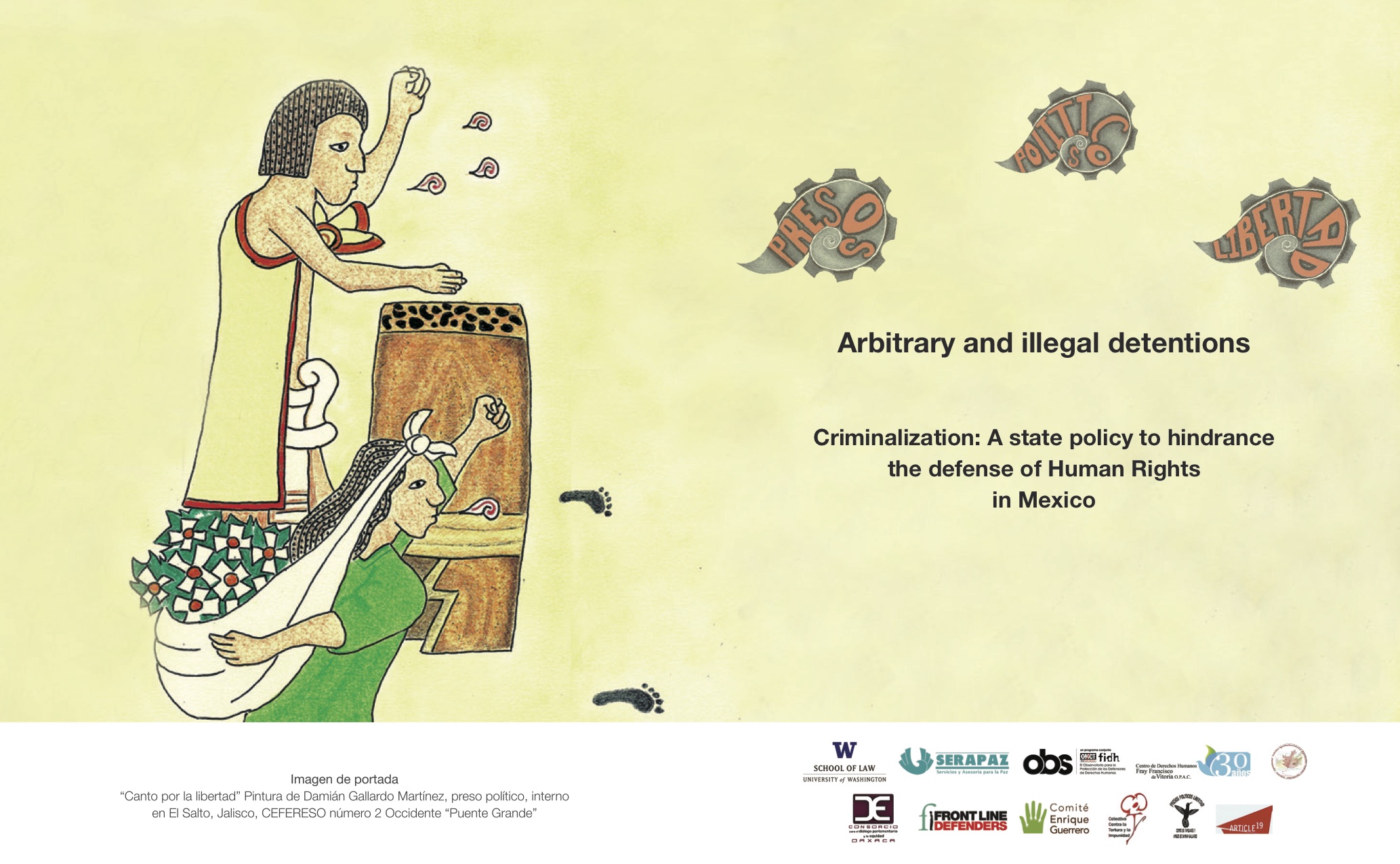REPORT: Arbitrary and illegal detentions - Criminalization: A state policy to hindrance the defense of Human Rights in Mexico

This document constitutes an articulated effortby different Mexican organizations of the civil society, committees ofrelatives of human rights defenders, political prisoners and internationalorganizations specialized in legal support, documentation of human rightsviolations, and protection of human rights defenders.
This document aims to make public the systematicrepression mechanisms used against human rights defenders and against thesocial movement in Mexico, in particular the use of arbitrary and illegal detentionsto undermine the advocacy work.
The seriousness of the situation is illustrated throughfive cases of human rights defenders ‒Damián Gallardo Martínez, EnriqueGuerrero Aviña, Librado Baños Rodríguez, Pedro Canché Herrera and NestoraSalgado García‒ who have been arbitrarily detained as a consequence of andreprisal against their advocacy work. To date, three of the five defendersremain unfairly deprived of their freedom.
With the publication of these cases, the aim is to make visible the existenceof international mechanisms which make visible and recognize the human rights violations.These mechanisms are key tools in the pursuit of justice. Specifically, thisdocument shows the opinions issued by the Working Group on Arbitrary Detentionof the United Nations calling for the immediate release of the victims and the redressof the damage.
However, the coordinated effort of organizationsand families seeking the implementation of these decisions has demonstrated theneed to create effective mechanisms to monitor the implementation by the WorkingGroup on Arbitrary Detention, in close coordination with the Office of the UnitedNations High Commissioner in Mexico.
The Working Groupon Arbitrary Detention is one of the special procedures of the United NationsHuman Rights Council. It was created in 1991 by the former Commission on HumanRights (the current Human Rights Council) and it is made of five independentexperts from the different regions of the world. The mandate of the Working Group includes: 1. investigatingcases on arbitrary detention; 2. requesting and receiving information fromgovernments, non-governmental organizations, and victims and their families; 3.reporting annually to the Human Rights Council.
Amongst its mainfunctions we can also find the field missions and the issuance of urgent actions.[1]
It is worth notingthat the Working Group on Arbitrary Detention, in the exercise of its mandate,interprets and applies international rules of international treaties that havebeen widely ratified by the Mexican government and incorporated into the nationallegal system by constitutional mandate. Under the procedures outlined in thisdocument, Mexico has had full participation and opportunities to presentarguments and evidence related to the complaints lodged.
“It is the onlymechanism that has not been established by a treaty whose mandate expressly foreseesindividual complaints. This means that its activities are based on the right ofindividual petition, anywhere in the world.”[2]
The search for justice,and the eradication of human rights violations and impunity, particularlyagainst human rights defenders, are an urgent priority in Mexico. To achievethis goal, strengthening and collaborating actively with international proceedingsand mechanisms such as the Working Group on Arbitrary Detention is essential.
The report is available here: Report Arbitrary Detention HRDs Mexico Sept 2016
[1] Working Group on Arbitrary Detention, Office of the United Nations HighCommissioner for Human Rights http://acnudh.org/wp-content/uploads/2014/08/ES-Factsheet-WGAD-formato.pdf
[2] Informative brochure No.26, Working Group onArbitrary Detention, Office of the United Nations High Commissioner for HumanRights, http://www.ohchr.org/Documents/Publications/FactSheet26sp.pdf
@font-face { font-family: "Arial";}@font-face { font-family: "Courier New";}@font-face { font-family: "Cambria Math";}@font-face { font-family: "Calibri";}p.MsoNormal, li.MsoNormal, div.MsoNormal { margin: 0cm 0cm 10pt; line-height: 115%; font-size: 11pt; font-family: Calibri; }p.MsoFootnoteText, li.MsoFootnoteText, div.MsoFootnoteText { margin: 0cm 0cm 0.0001pt; font-size: 10pt; font-family: Arial; color: black; }span.MsoFootnoteReference { vertical-align: super; }pre { margin: 0cm 0cm 0.0001pt; font-size: 10pt; font-family: "Courier New"; }span.HTMLprformatCar { font-family: "Courier New"; }span.NotedebasdepageCar { font-family: Arial; color: black; }.MsoChpDefault { font-family: Cambria; }div.WordSection1 { }